Phacelia is considered a universal plant. This annual is an excellent honey plant, a good forage crop and an ideal green fertilizer. In the wild, such a flower grows in abundance on the American continents.
Material Content:
Phacelia: A Botanical Description
Phacelia is an annual of the Aquatic family. However, there are both biennial and perennial species.
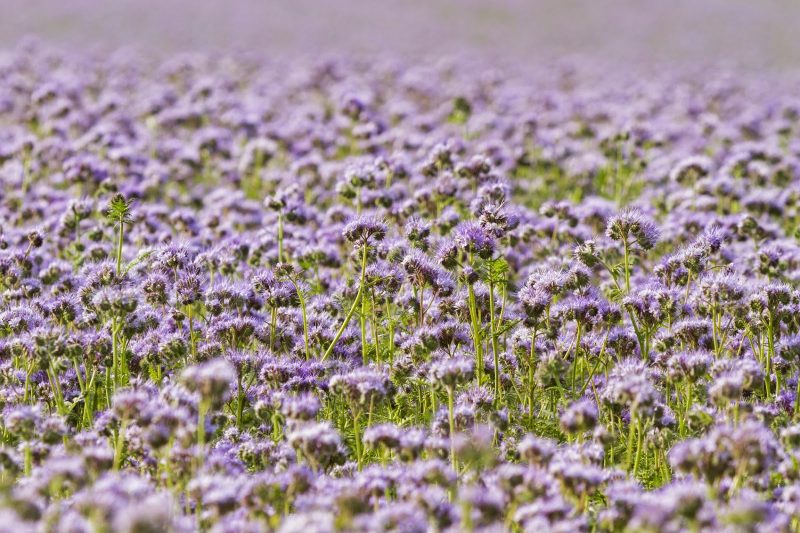
Main characteristics:
- erect and fragile stem up to 90 cm high;
- cirrus leaves of a greenish-ashy shade, covered with a small hard fluff;
- flowers of blue or pale blue hue in the form of miniature bells collected in bunches.
Because of this similarity, the flower got its name, because in Greek the word phakelos means "bunch". The fruits resemble a small box with small seeds inside. 1 g totals more than 2 thousand seeds that retain germination for 3 to 4 years. Flowering begins 5 to 6 weeks after planting and lasts for 2 months.
Common species for growing
In nature, there are more than 8 dozen species of phacelia.

But in gardening, only a few are used:
- Phacelia tansy. Decorative and agricultural culture. It grows to 50 cm in height. It forms more than 20 large shoots. Blossoms in May with small bluish-gray inflorescences in the form of an ear.
- Bell-shaped. It grows to 25 cm. The stems have a reddish color. It blooms from the third week of June with dark blue inflorescences collected in a brush. Long flowering - more than a month.
- Twisted.It has miniature blue flowers of a characteristic shape on the tops of the stems. The leaves are fluffy, light green in color. It blooms all summer. It looks very decorative, therefore it is often used to design flower beds.
- Phacelia Purche is a beautiful ornamental plant. It forms compact bushes 50 cm high. It blooms for a long time with rather large flowers for phacelia.
The use of phacelia as siderate
Siderat is a crop that is used to enrich and improve soil composition and structure. Fatselia can be grown as a pure culture, or in a mixed form with other siderates in aisles, near-trunk circles, in beds.
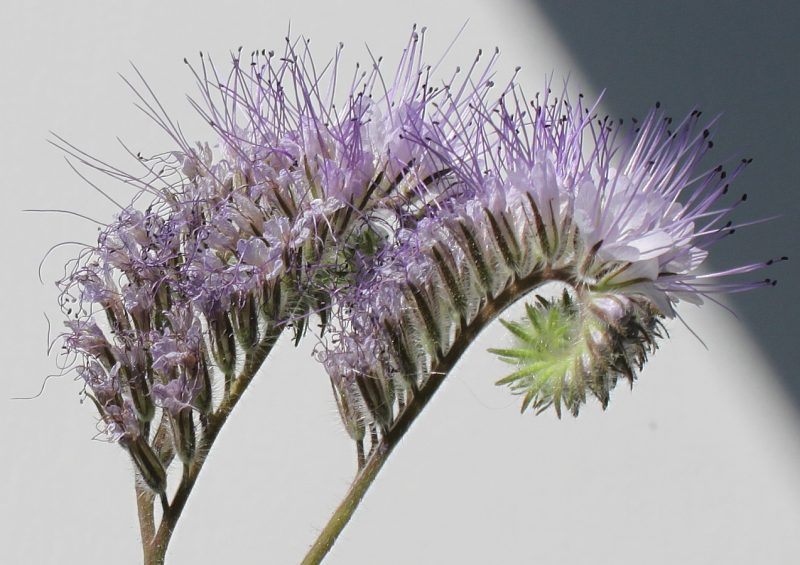
Advantages of using tansy tansy as siderat:
- grows very quickly, so the weeds simply do not have time to sprout in areas sown with fatselia;
- loosens and improves the soil structure with its roots, making dense clay soil light and crumbly;
- saturates the soil with various mineral and organic substances;
- retains moisture in the soil, so watering can be infrequent;
- prevents the development of viral and fungal diseases;
- It looks beautiful, since the leaves are carved;
- attracts insects that pollinate plants to the site.
When leaves are decomposed, the soil is enriched with nutrients, so after planting phacelia, the beds can not be fertilized for 2 to 3 years. The soil becomes fertile, loose and high quality.
Interestingly, in 40 days the plant forms more than 250 kg of green mass per hundred square meters, and this is equivalent to 300 kg of manure.
As soon as the phacelia begins to bloom, gardeners recommend mowing it right away. If this is not done on time, the stems will become too coarse and will decompose for a long time. After that, the mown green mass is poured with a solution that improves decomposition, mixed with the ground and dug. Then you can again sow phacelia in the same area. During the season, it will be possible to plant a few crops. Next year there will be a rich harvest in such a plot.
In plantations of phacelia, it is very convenient to grow seedlings. Wide holes are made in the grass and young plants are planted there. Phacelia protects the soil from drying out, and seedlings from scorching sunlight.
Also, this culture is used to improve the yield of root crops, sowing it in the aisles. It improves air exchange in the soil and promotes the rapid growth of vegetable crops.
Phacelia as a honey plant
Phacelia is a honey plant. It attracts bees and other insects that "graze" on it from early spring to late autumn. At the same time, not less than 300 kg of honey can be collected from a hectare of culture, and in favorable conditions even up to 800 - 900 kg. These are impressive indicators. For example, with the same area sown with buckwheat, you can collect about 70 kg of honey, and white mustard - not more than 100 kg.
Outdoor landing
Phacelia can be sown before winter, in spring, as soon as the snow melts, or in autumn. In the latter case, it is necessary to calculate the sowing time so that the seeds germinate before the first frost.

Since this crop has a very short growing season, it can be sown 3-4 times a season.
But she gives the best results when sowing from July to August. At the same time, the row spacing should be about 10 - 12 cm. Seeds should be planted to a depth of not more than 2 cm. About 120 g of seed will be required per hundred square meters. The seeds are very small, so it is better to mix them with sand or dry fine sawdust to sow more evenly.
If the soil is very dry, water the crops immediately. Seeds germinate at a temperature of + 4 ° C.
How to care for fatseliya
Phacelia is very unpretentious in leaving. It can grow well even in areas of risky farming.
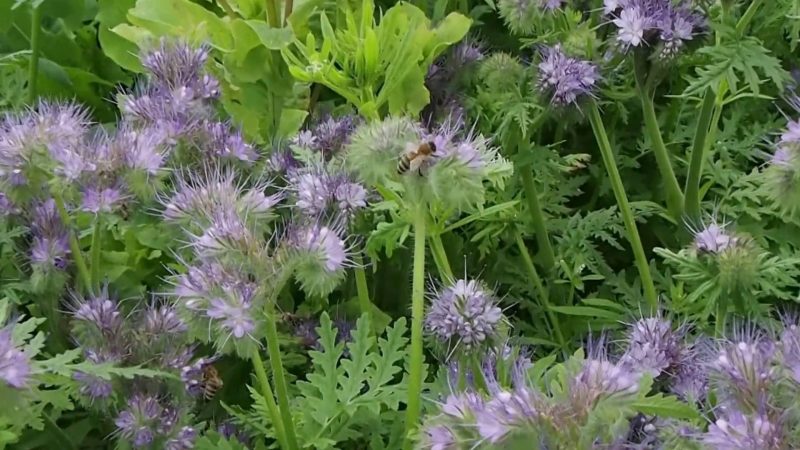
It is undemanding to the soil, easily adapts to stony and sandy soils.
The culture is characterized by high drought and cold resistance, can withstand short-term cooling to -9 ° C. It can be planted in the shade, it grows well under the trees.
When shoots appear, they can be thinned out a little if they are thick. The optimal distance between plants is 5-6 cm. Then they will branch well and will not give weeds any chance.
Seed collection and storage
Seeds are harvested when the spikelets turn brown by more than half. The largest number of seeds can be obtained from the first crops. In subsequent crops, due to weather conditions and frequent rains, the seeds may not fully ripen. It is best to collect boxes from the bottom of the plant - there the seeds are the largest and most complete. If they are not removed on time, they will fall to the ground and grow further.
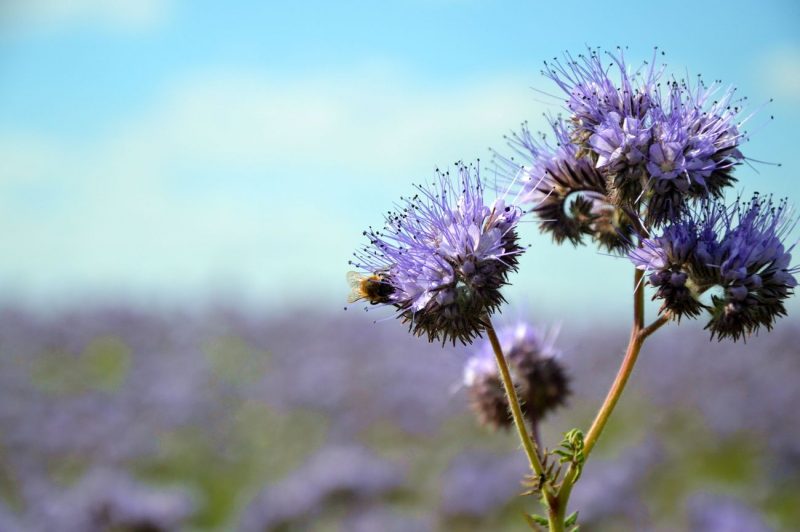
Some summer residents just cut dried spikelets, lay them in a dry and ventilated place and leave to dry completely. When the spikelets are completely dry, the seeds spill out themselves.
The collected seed must be dried, cleaned of debris and transferred to linen bags.
Pest and Disease Control
The plant has a high resistance to disease and is practically not affected by pests. It is even recommended to be planted to protect other plants from various diseases and insects.
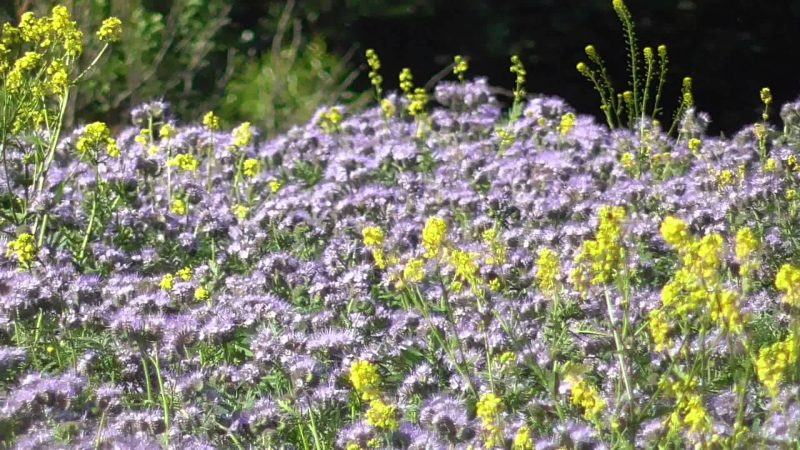
It releases phytoncides, disinfects the area and repels parasites - locusts, aphids, leafworms, moth, nematodes.
Phacelia deserves the attention of every gardener. This is natural phytosanitary, a beautiful ornamental plant, an excellent honey plant, a useful fodder crop and an indispensable precursor for any vegetable crops. Its wise use makes it easier to work, enrich the soil and collect a rich harvest of vegetables.












